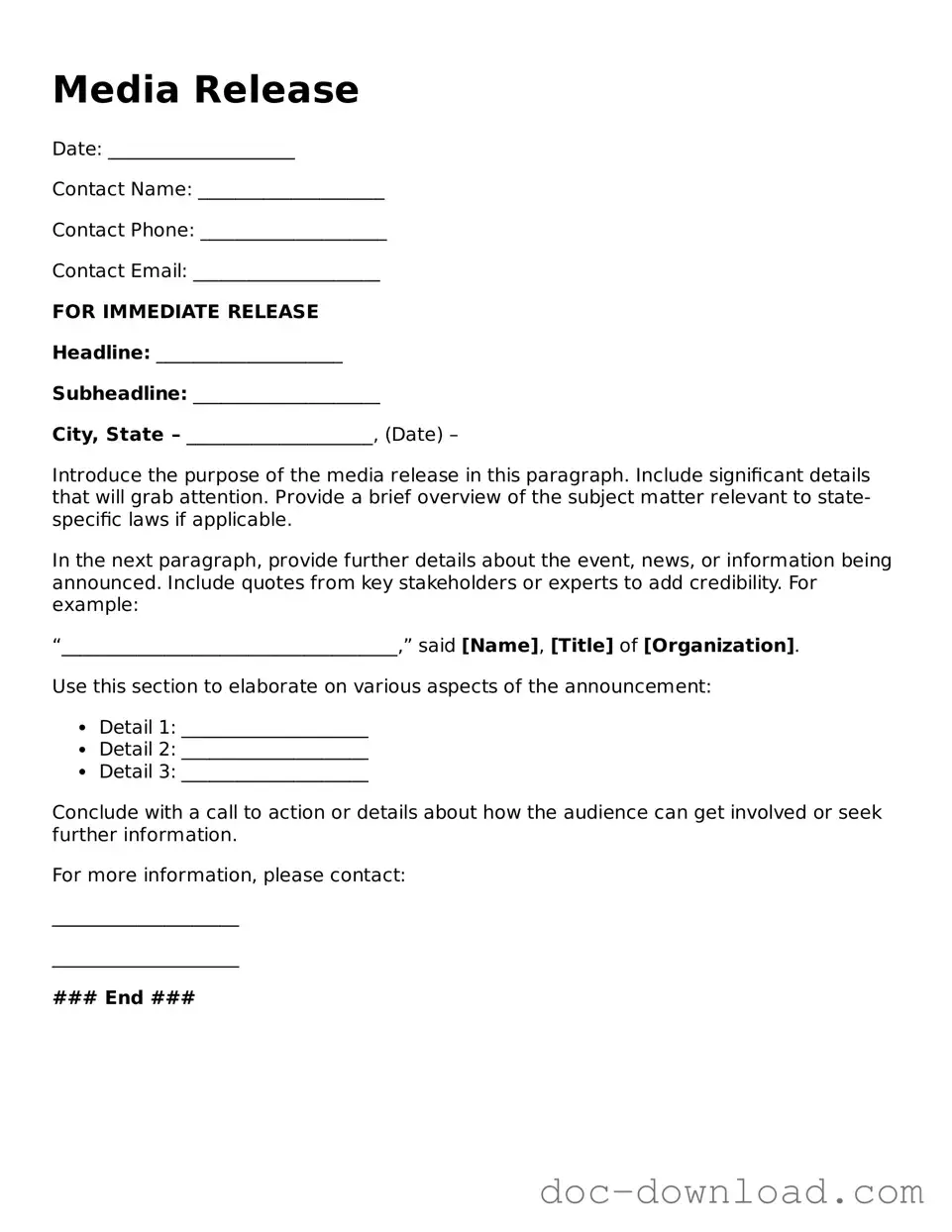The Media Release form shares similarities with the Consent Form, which grants permission for the use of an individual's likeness or personal information. Like the Media Release, the Consent Form ensures that the individual understands how their information will be utilized. Both documents require clear communication of the intended use, whether for promotional materials, advertisements, or other public displays. The primary purpose of each is to protect the rights of the individual while allowing organizations to use their information legally.
Another document akin to the Media Release is the Model Release form. This form is specifically designed for photographers and videographers who wish to use images of people in their work. The Model Release outlines the rights of the photographer to use the images, similar to how a Media Release outlines the rights to use a person's likeness in various media. Both forms aim to clarify the permissions granted and to prevent future disputes over the use of images.
The Waiver of Liability is also comparable to the Media Release form. While the Media Release focuses on the use of personal images and information, the Waiver of Liability is concerned with protecting an organization from claims related to injuries or damages. Both documents require individuals to acknowledge potential risks and provide their consent, ensuring that they understand the implications of their agreement.
The Release of Information form is another document that bears resemblance to the Media Release. This form is often used in healthcare or legal contexts to allow the sharing of personal information. Like the Media Release, it requires explicit consent from the individual regarding what information can be shared and with whom. Both documents emphasize the importance of informed consent in protecting personal privacy.
The Permission Slip is similar in nature to the Media Release, particularly in educational settings. Permission Slips are typically used to obtain consent from parents or guardians for children to participate in activities. While the Media Release focuses on media exposure, both documents serve the purpose of ensuring that individuals are aware of and agree to the use of their or their child's likeness in various contexts.
The importance of a Release of Liability form cannot be overstated in various activities, especially those that involve risks, as it provides essential protection for those involved. By incorporating a clear understanding of the responsibilities and potential dangers, individuals participating in events can feel secure knowing that they are making an informed decision. Moreover, resources like usalawdocs.com/ can offer additional guidance and templates for creating effective liability releases.
The Non-Disclosure Agreement (NDA) can also be seen as related to the Media Release form, though it serves a different purpose. An NDA protects confidential information shared between parties, while a Media Release allows for the public use of an individual’s likeness. However, both documents require clear communication of what is being agreed upon and aim to protect the rights of the involved parties.
The Release Agreement is another document that parallels the Media Release. This agreement outlines the terms under which one party can use another party’s property or rights. Similar to the Media Release, it ensures that the individual understands the terms of use and consents to them, protecting both parties from potential disputes over usage rights.
The Liability Release form is also relevant in this context. While the Media Release focuses on the use of an individual’s likeness, the Liability Release form is concerned with releasing an organization from responsibility for injuries or damages. Both forms require individuals to acknowledge risks and consent to certain terms, ensuring that they are informed about the implications of their agreement.
Finally, the Photo Release form is closely related to the Media Release. This document specifically pertains to the use of photographs and requires the individual’s consent for their image to be used in various media. Like the Media Release, it aims to protect the rights of the individual while allowing organizations to utilize their images for promotional or informational purposes.
